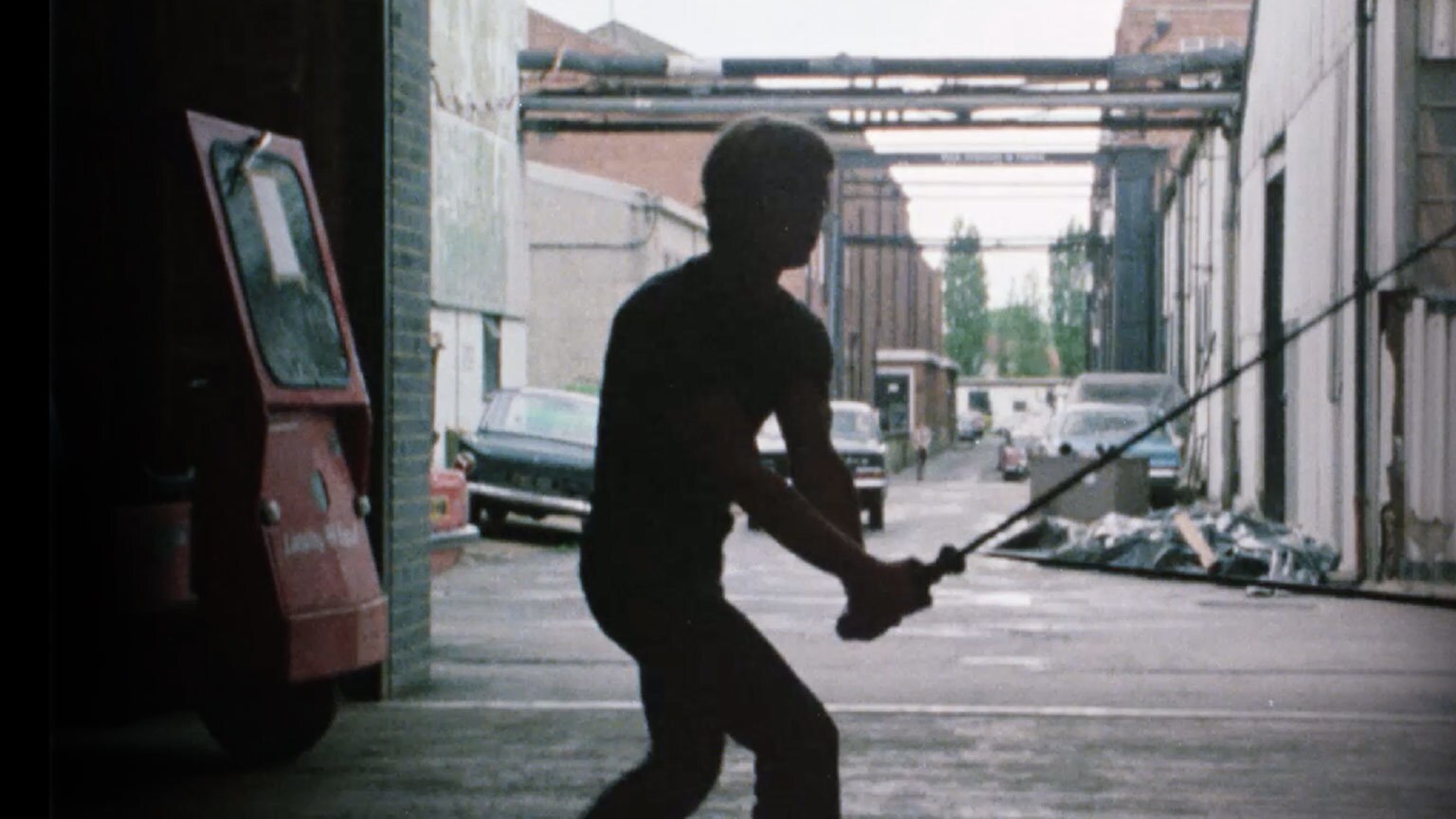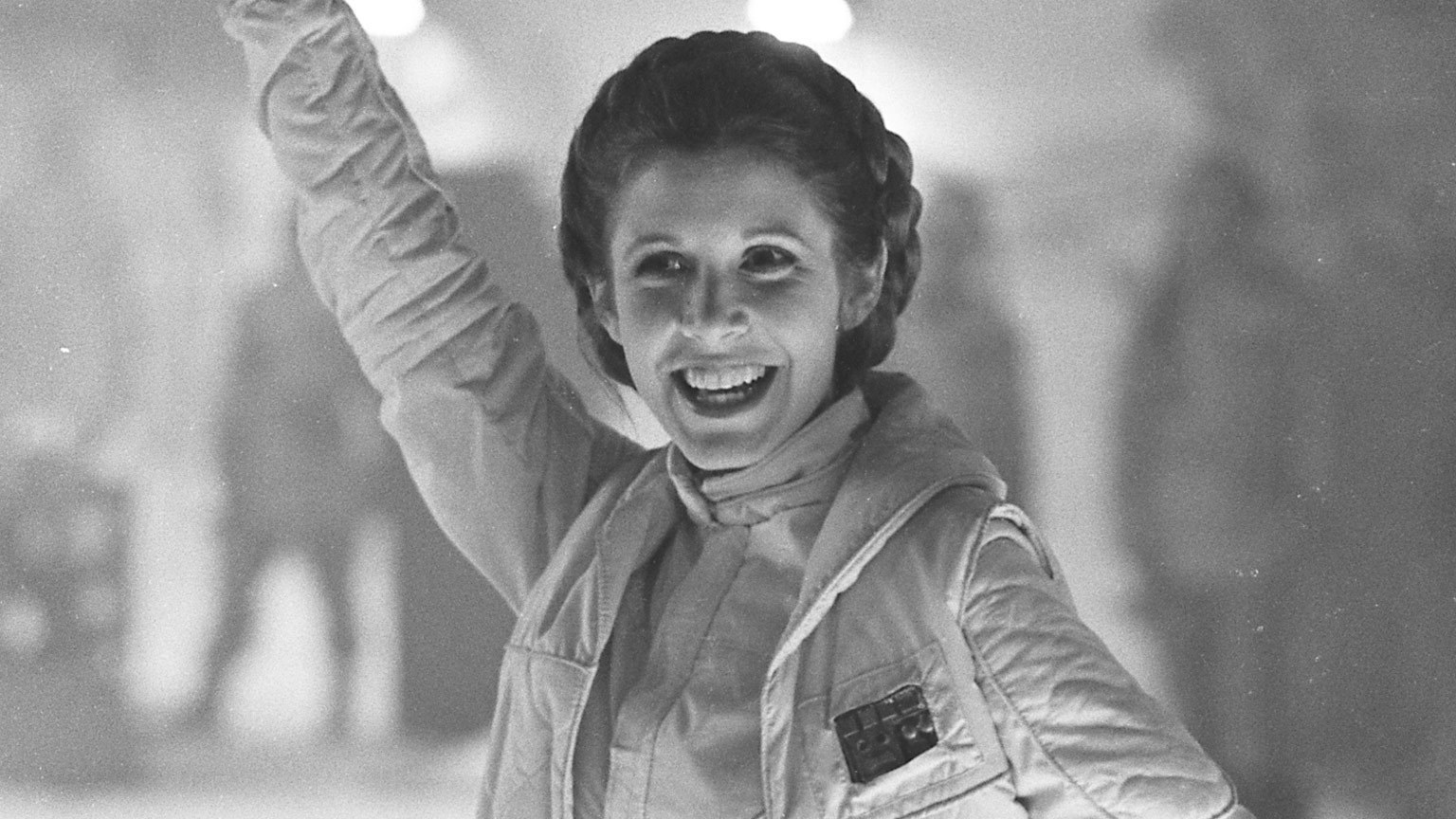Studying Skywalkers is an exclusive column that investigates the characters, themes, and lessons of Star Wars from an educational, literary perspective. In this installment, StarWars.com examines character reactions to Han Solo’s placement in carbonite from a contextual, cinematic perspective.
A Star Wars film speaks to its audience on many different levels, and in many different ways. It can be entertaining, can feature insights into the human condition, and can enrapture us with beautiful and profound imagery. The latter is of particular interest here, in that Star Wars is not only a terrific story with beloved characters, but also is cinematic art. Much has been said about the craft of film when examining the Star Wars cinematic universe and that is because each movie is replete with visual splendor.
The English idiom “A picture is worth a thousand words” works well here, as many frames and moments in the saga speak volumes about what is going on in a scene. Each one tells its own story, and helps to reveal much more detail than one might originally suspect. In this subset of Studying Skywalkers, we look at the anatomy of a scene, and how it enriches not only the particular film, but inserts crucial moments of story that enable the audience to come to know this universe in a more profound and insightful way.
Perhaps no scene evokes more pathos for fans of the original trilogy than the first climax in The Empire Strikes Back, in which Han Solo is encased in carbonite. Solo’s fate affects multiple characters in drastically different ways; director Irvin Kershner and screenwriter Lawrence Kasdan create a powerful scene that enriches the poignancy of this dramatic and tense moment. It is both contextually and cinematically powerful, as each shot communicates a vast amount of information in seconds. Kershner has framed this moment to demonstrate where each character is emotionally, and uses many effective cinematic storytelling devices to make this moment even more affecting.
C-3PO and Chewbacca (Four seconds)
The most immediate character shot after Han is frozen features a discombobulated C-3PO and a mournful Chewbacca. The blocking of the scene has C-3PO’s head frantically turning from side to side, with no possibility of seeing Han’s fate, due to his being strapped to Chewbacca’s back. He is confused, helpless, and dreadfully nervous. Much like the heroes in this sequence, C-3PO feels completely out of control and useless.
Chewbacca is helpless as well, but for very different reasons. Not only does he have an albatross on his back in the personae of a fettered protocol droid, but he is emotionally crippled by the seemed loss of his dearest friend in the galaxy. He is so emotionally distraught that the camera does not show the audience his face, as his grief is too great in that immediate moment. He feverishly tilts his head from one side to the next, in order to see what has become of his co-pilot. He is in crisis, and cannot see what is going on, which mirrors the audience’s point-of-view as well. The audience experiences great empathy as a result.
Darth Vader (Three seconds)
In just three brief moments, Kershner chillingly reinforces for the audience all they need to know about Darth Vader up to this point in the film. The remnants of a smoky frost stream from the top of the frame straight down, revealing an unattached, cold-hearted Vader. His black mask is expressionless, as he looks almost straight up into the eye of the audience. This is no accident; it’s a method filmmakers use to have the character stare right into the audience, making it personal for them. It’s also a close-up; the Rebels cannot escape from the Empire, and neither can the viewers. The message: in a frighteningly brief instance, Vader can take everything away from you, without the slightest sense of emotion or remorse. It is no wonder that he is one of the most terrifying screen villains of all time.
Ugnaughts (Three seconds)
The small, humanoid working class of Bespin goes about their yeomen-like work, without a hint of awareness of the intense emotion cascading throughout the chamber. As they check monitors and ensure the process was a success, there is a distinct meaning present: this is a job. There is no right or wrong here for the ugnaughts. The remnants of transient mist also seem to indicate that the ugnaughts are not seeing clearly. It adds to the tension for the audience, as we understand that while Han’s friends are devastated, for the rest of the inhabitants of Cloud City, it’s a normal day. Being in the carbon freeze chamber does more than freeze a person. It also appears that it can numb one’s conscience as well.
Lighting
An effective aspect of this gripping scene is the lighting, which further punctuates the mood of the moment. Cinematographer Peter Suschitzky helps create a powerful atmosphere that illustrates the gravitas of what is transpiring. Not only does it look gorgeous, but it also conveys a lot of atmospheric literacy. The overall lighting is dark, providing us with the sobering realization that the absence of light indicates a lack of hope or optimism.
What little light there is provides a sharp contrast. Orange and blue are primary here, and while the blue appears to be atmospheric, it is also dark and distant, indicating how far away from the outside world and optimism the heroes truly are. Everyone is standing on a black platform, with dark orange light seeping through. These colors are a contradiction of the blue mentioned above. Orange can stand for many ideas or emotions, but the prevalent one here is hatred. Vader’s rage is a conduit for the dark side, and everyone is firmly anchored to this orange and black foundation, literally and figuratively.
The Claw (Ten seconds)
While modern audiences may think of the beloved Toy Story when they hear “the claw”, this claw is anything but joyful in The Empire Strikes Back. The angle of the camera is below, as the claw unflinchingly and methodically lowers into the spot where Han Solo should be. Again, the use of mist sometimes blocks the full view of the mechanical appendage, as it descends to pick up the encased Corellian.
More screen time is given to the claw than anything else in this scene, which creates a notion that fate has played its hand. No emotion, no rationale, and no chance of escape: Han Solo is frozen, and the lack of humanity shown Solo hurts even more. The claw, and not a loving, human hand, efficiently raises Han out of the pit. It comes from above and plucks him asunder, as his friends look on with grief in their hearts. There is no escape from Han’s destiny, and all that remains is the memory of Han’s humanity, ripped from him at the hand of Vader and a mechanical claw.
Lando, Leia, and Carbonite
We are privy to a few quick reaction shots from Lando Calrissian and Leia Organa before a word of human dialogue is uttered. Kasdan, a master storyteller, shows the shock the heroes feel, as no sense of empathy or humanity from the Empire is present. Lando looks utterly void of hope, and almost appears to be absent of his own body, much like his former friend, who is callously slammed to the ground without a hint of vibration. Leia is also a statue of her former self, and shows loss, as well as a complete emptying of joy within her heart. She seems to have had her soul crushed by this dramatic turn of events, as has the audience.
The acting by Billy Dee Williams and Carrie Fisher is unforgettable and powerful, with their talents on full display. The amount of empathy they exude is awe-inspiring, and is a masterclass in how to create despair for the audience. The sculpted and ghastly image of Harrison Ford as Han Solo encased in carbonite drives the point home in unimaginable ways. His mouth is parted, with his teeth gritting, showing the immeasurable pain he must have suffered. There is no escape for him and none for us as an audience, due to this amazing filmmaking.
The entire sequence is less than five minutes in all, but with exquisite directing, writing, camera angles, lighting, and art direction, this haunting scene perpetuates why The Empire Strikes Back’s carbon freeze sequence has left an indelible mark on Star Wars fans..
And bear in mind, we have not even mentioned John Williams’ evocative and beautiful score ….
Dan Zehr is a high school English teacher with an MS in Teaching and Learning, and runs Coffee With Kenobi (with co-host Cory Clubb), a Star Wars Podcast that analyzes the saga through critical thinking, analysis, interviews, and discussion. He is also a member of the Rogues (as Blue Leader), a network of teachers that incorporate Star Wars in the Classroom.















